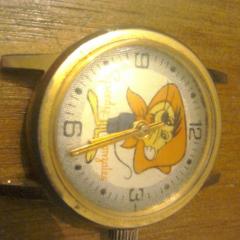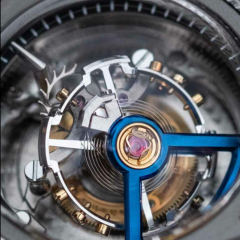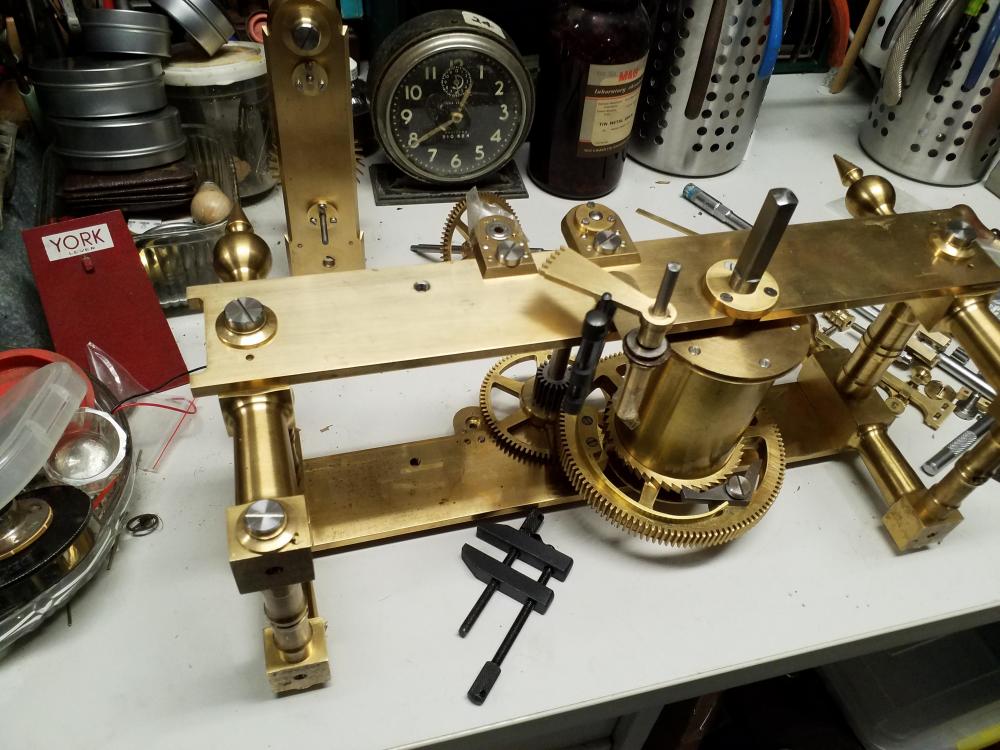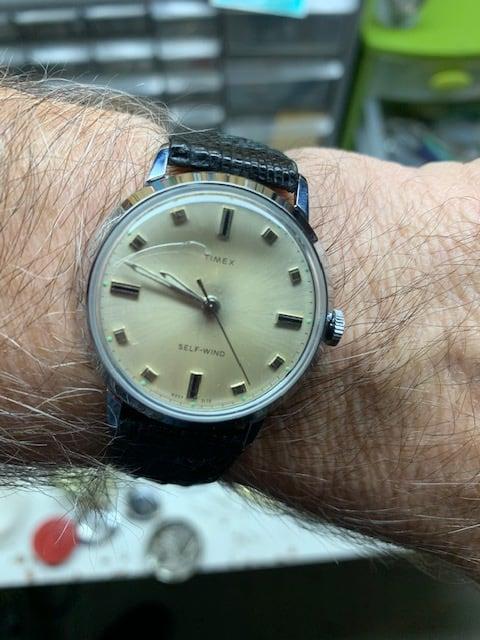Leaderboard
Popular Content
Showing content with the highest reputation on 11/13/19 in all areas
-
Hi Joe a copy of the horological times for your interest. There is a section in it that goe's some what to explaining the CGS system. There is also a book, "Watch Adjustment" by Jendritzki explaining the same. Centimeter,Gram,Second. HT_Sep_2017_MembersOnly.pdf2 points
-
UV cure glue, also known as Loca glue, or even UV cure nail polish would be my suggestion. The advantage of these glues, is they stay liquid till hit with a UV curing lamp, so if you use too much, or for example fill the tube by mistake, you can remove the excess, check you have it right, *then* hit it with the UV torch.2 points
-
Hi First thing to do is read up on three train mechanisms before starting they employ some complex gear work for the strike and the chime not forgetting the auto correction for the chime. To remove the springs one has to let down the power on all the barrels before doing anything. If this is your first attempt at repairing a clock I should get hold of a simple two train strike only to practise on and gain knowledge before doing a three train clock. Cleaning can be done using any branded clock cleaner and a brush, wear rubber gloves , Priory polishes do a good cleaner and not too expensive, Windles clock oil is a good one a good selection of screwdriver, pliers, an eyeglass or loupe for inspection Donald de carles book on clock repairing or brian loomes book or laurie penman all available on the net as are the tools, you may need a spring removal tool to get the springs out of the barrels. So s you see it is not some. .thing to be taken lightly there is a lot to go wrong. One could write a whole chapters on the rights and wrongs and do's and dont 's on clock repairing.2 points
-
Hi Yes a twin train clock no matter the state its in will give you the basics of how the clock fits together and what makes it tick. taking it to pieces once or twice cleaning and oiling , removing springs etc for practise is a must. Once you have gained the dexterity and knowledge and feel confident enough tackle the project clock. It is far better to make a mess of a clock costing a pound or two than destroying the family heirloom. Dumping the whole mech in the ultrasonic will lead to trouble as the main springs will be dried out and bind in the barrels also the pivot bearings will not be cleaned sufficiently, and also if the pivots/bearings are worn you have just opened another can of worms. When you dismantle a clock and clean it all the pivots are checked for wear and polished, the bearings are pegged out with pegwood and polished or re-bushed if worn then re assembled. It all sounds dramatic I know but its just common sense.1 point
-
I must say that with the better quality ones mentioned in the topic above I could open bazillion watches and a Swiss made one would not make any difference. The real issue comes with extremely tight casebacks for which you want a bench opener, or at least an excelled holder block and a two handles opener.1 point
-
AS Watchweasol said..Sounds like the springs are fully wound and under a LOT of power....To remove the springs you HAVE to let down the power on all the barrels before doing anything to this movement, as I found out when I first started the hobby many years ago. If you have never taken a movement apart before, this is Not really the best movement to learn on. Hope all goes well for you.. Len1 point
-
Hi Joe here is the data sheet for the Oris as requested also attached is the page from Dr Ranfft 's site . cheers Iain 2434_Oris 671,672,677.pdf bidfun-db Archive_ Watch Movements_ Oris 671.html1 point
-
I’m new to watch tinkering ever since I foolishly neglected to change the battery in my vintage seiko world timer. The consequent corrosion damage rendered it apparently mortally wounded ! Therein started my quest to see how it ticked ( or rather didn’t). Fascinating business which well highlights the ingenious inventiveness of humankind and their ability to mass produce complex intricate devices. Tricky game with much to learn and forums such as this are I hope a godsend. Thanks for offering the opportunity.1 point
-
1 point
-
1 point
-
1 point
-
Hi and welcome to the forum. there are many willing helpers on here and no shortage of advise.1 point
-
Loctite. That is what I used when cutting wheels and mounting them, among other things to do with making clock parts on my lathe.1 point
-
No need to apologise or to move, They are related After all I need to identify the movement because I need a hairspring I unfortunately never learn about CGS and hairspring formula yet but would love to in the future Thank you1 point
-
The only issue I can see with using UV adhesives (apart from not having great experiences with it personally) is that I'm not sure that the UV will penetrate into the adhesive if it is already an interference fit.1 point
-
1 point
-
I recently used Loctite 603 for some watch repairs as it was recommended by the BHI for attaching wheels to arbors instead of soldering. I believe there may be an even stronger version. https://www.henkel-adhesives.com/uk/en/product/retaining-compounds/loctite_603.html1 point
-
There are also UV cure epoxies. Examples here.. https://www.epoxies.com/products/uv-curable-illumabond/ Most of these glues can be found on ebay etc.1 point
-
There are versions of Loctite which would work better than superglue in my opinion. Or Araldite even.1 point
-
as far as i know; automatic means "auto wind". AND recently learned : only that mainspring has a clutch so the winder will not break the main spring. a good reason to stay with quartz watches. vin1 point
-
1 point
-
Hi If using the super glue method buy the cheap stuff from the pound shop pound for five tubes its thin. Or using the domed end of a staking tool punch and closing the hole on to the bush then lightly flatten the protruding bush metal with a flat punch,1 point
-
You are asking for authenticity opinions, now beside that this is the wrong section for that, you really, really have to post pictures if you want meaningful replies.1 point
-
"A flea market (or swap meet) is a type of street market that provides space for vendors to sell previously-owned (second-hand) merchandise..." Source: https://en.wikipedia.org/wiki/Flea_market1 point
-
Sorry, I can't. I have sworn to an inner circle of initiated to never revel the secret magic place where one can get any watch part. Pretty much like unobtanium, it can be mentioned, but never achieved .1 point
-
Well, I have finally found the "true source of the problem", and I feel equally elated and embarrassed The problem is that I replaced the setting lever screw after I replaced the barrel bridge, when in fact the setting lever screw must be replaced before the barrel bridge. Doing it in the wrong order "works" but it will make the oscillating weight slightly foul the head of the screw and it will make it impossible to remove the stem without the setting lever detaching from the setting lever screw. This mistake I won't be doing again!1 point
-
1 point
-
1 point
-
I have used a piece of paper with a small slit. Starting at the collet and moving the paper in a circle to follow the coil . This keeps the tangled part above the paper and easier to untangle with tweezers as you rotate the paper and move your way outward. Thoughts? Sent from my iPhone using Tapatalk Pro1 point
-
1 point
-
I've heard from a few folk that watch winners don't swing the oscillating weight rapidly enough to charge kinetics, but I don't know for certain. I do know that if correctly paced on a Braun toothbrush induction charger base they'll charge up though.1 point
-
1 point
-
1 point
-
I've worked on a few. They go together just like they came apart. Oiling: Light oil on all wheels except center wheel. No oil on pallet pivots, D5 on the center wheel pivots and the barrel arbor. As for assembly, start from a known point (say the escape wheel) and puzzled your way towards completion. Its not too hard to figure out the wheel placement. RMD1 point
-
There nothing that a picture will tell you. Everything looks good but I wanted to know if this rang a bell with anyone. I have about 30 Omegas but I am puzzled by this one.0 points















